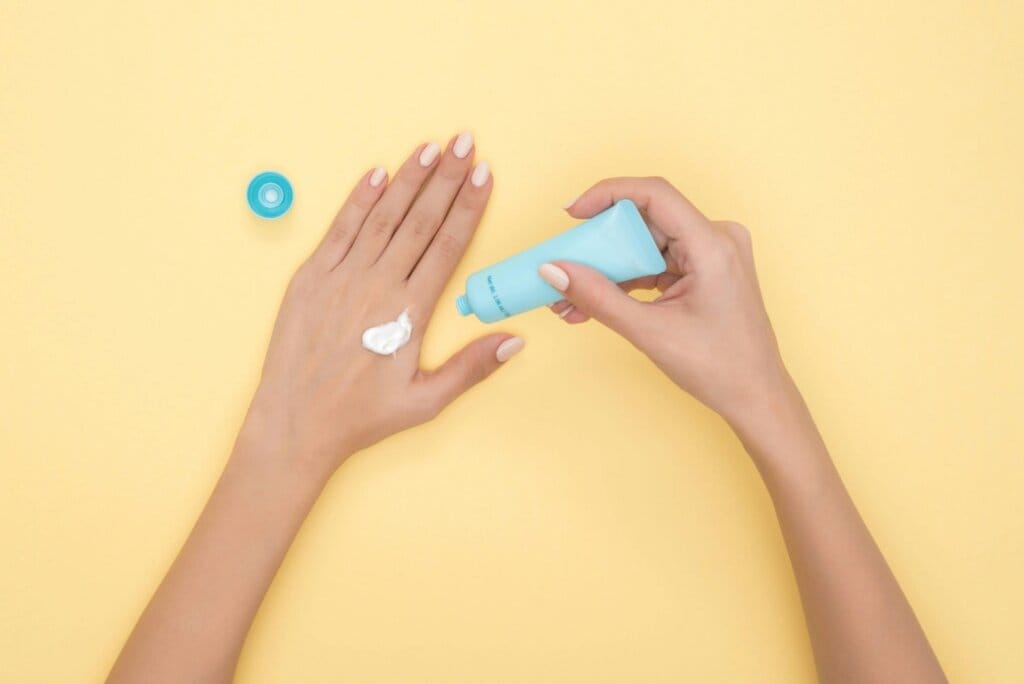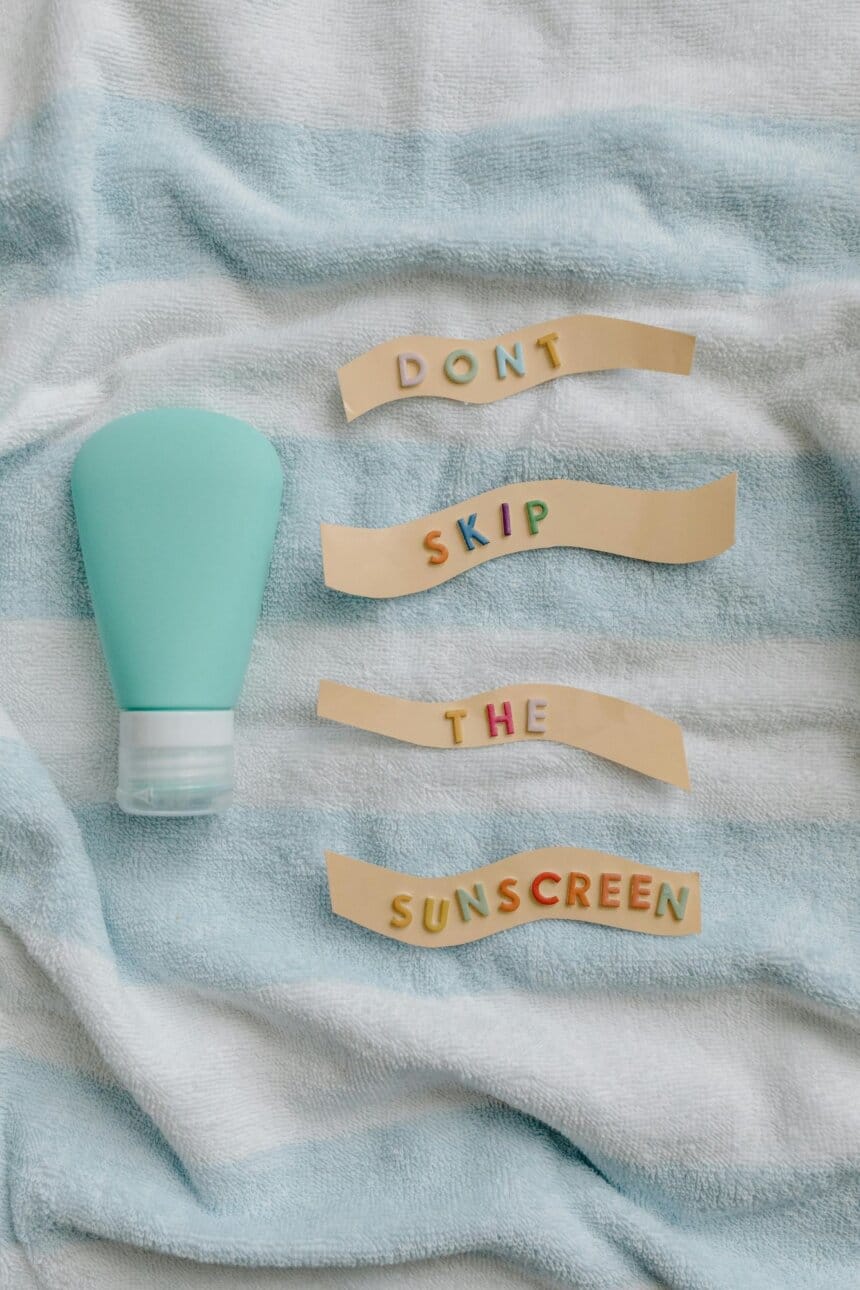Sunscreen is a crucial part of skincare, yet numerous myths hinder proper usage.
Misunderstandings regarding SPF ratings, application techniques, and skin types can result in insufficient protection and early signs of aging.
In this article, we will debunk prevalent sunscreen myths and guide you on the correct application for optimal efficacy.
Myth 1: Sunscreen Is Only Necessary During Summer
Truth: Sunscreen is essential throughout the year.
Many individuals think that sunscreen is only crucial in the summer or on sunny days.
However, harmful UV rays are present even when it’s cloudy, rainy, or during winter.
UVA rays can penetrate deeply into the skin and lead to early aging, and they are available all year.
UVB rays are responsible for sunburn and can contribute to long-term harm as well.
To safeguard your skin, it’s important to apply sunscreen daily, regardless of the time of year.

Myth 2: Individuals with Dark Skin Don’t Require Sunscreen
Truth: Every skin type requires sun protection.
It is a widespread belief that those with darker skin don’t need sunscreen due to having more melanin, which offers some inherent defense.
While melanin does provide a minimal level of UV protection (approximately SPF 13), it does not shield against sun damage, premature aging, or skin cancer.
Research indicates that skin cancer in individuals with darker skin is often identified at more advanced stages, making it particularly hazardous.
Myth 3: A Higher SPF Provides All-Day Protection
Reality: No sunscreen remains effective all day long.
SPF (Sun Protection Factor) reflects the degree of protection against UVB rays, but it doesn’t guarantee safety throughout the day.
Even with an SPF of 50+, reapplication is necessary.
Sunscreen diminishes due to sweating, exposure to water, and natural oil production on the skin.
Experts advise reapplying every two hours, particularly if you are outside or swimming.
Myth 4: Makeup With SPF Is Sufficient
Reality: SPF in cosmetics shouldn’t replace sunscreen.
Various foundations and BB creams have SPF included, but they do not provide adequate protection for your skin on their own.
Achieving the SPF level listed on these products would require applying an impractically thick layer of makeup.
Instead, use a dedicated sun screen beneath your makeup and reapply with SPF powders or mists.
Myth 5: Sunscreen Prevents Vitamin D Production
Reality: You can still receive sufficient Vitamin D while using sunscreen.
Some individuals steer clear of sunscreen, worrying it will hinder their body’s capacity to synthesize vitamin D.
However, sunscreen does not entirely block UVB rays, and the majority of people still obtain enough vitamin D from limited sun exposure and their diet.
If you’re worried, prioritize sources of vitamin D from foods like fish, eggs, and fortified dairy products or consider using supplements.
Myth 6: Sunscreen Isn’t Necessary When Staying Indoors
Truth: UVA rays can go through windows and screens.
Even when you’re indoors, UVA rays can penetrate through windows, causing skin aging and damage.
If you’re positioned near a window or spend time in front of digital devices, exposure to blue light can also lead to pigmentation and stress on the skin.
Applying a broad-spectrum sunscreen indoors can help shield your skin from cumulative harm.
Myth 7: Sunscreen Is Only Needed on the Face
Truth: All exposed areas of your body require protection.
Many people focus on applying sunscreen to their face and neglect other exposed regions such as the neck, ears, hands, and feet.
These areas are also at risk for sun damage.
Make sure to apply sunscreen evenly on all exposed skin for full protection.
Myth 8: Water-Resistant Sunscreen Offers Permanent Protection in Water
Truth: Water-resistant doesn’t imply it’s waterproof.
Sun screens marked as “water-resistant” provide protection for only about 40–80 minutes when exposed to water.
After swimming or sweating, it’s still essential to reapply sunscreen right away to ensure continued protection.
Myth 9: Sunscreen Leads to Breakouts and Blocks Pores
Truth: The appropriate sunscreen will not obstruct pores.
Many individuals skip sunscreen due to concerns about acne.
However, there are non-comedogenic, lightweight, gel-based sun screens formulated for acne-prone skin.
Look for oil-free, fragrance-free options containing ingredients like niacinamide and zinc oxide for a skin-friendly choice.

How to Use Sunscreen Effectively?
Now that we’ve dispelled common myths, let’s discuss the best practices for using sunscreen to reap its full benefits.
- Select the Right
Broad-spectrum: Offers protection against both UVA and UVB radiation.
SPF 30 or greater: SPF 30 prevents 97% of UVB rays, while SPF 50 stops 98%.
Water-resistant: Important if you swim or perspire.
Suitable for your skin type: Cream-based sunscreens are ideal for dry skin, while gel-based ones work better for oily skin.
- Use the Correct Amount
Apply roughly a teaspoon (the length of two fingers) for your face and a shot glass amount for the entire body.
Put it on at least 15-20 minutes before going outside to ensure proper absorption.
- Reapply Often
Every 2 hours when outside.
Right after swimming or sweating.
Utilize powder or spray SPF for reapplying over makeup.
- Layer Sun screen Appropriately
Apply sun screen after your moisturizer and before your makeup.
For chemical sun screens, wait for absorption before adding other products.
For physical (mineral) sun screens, use them as the final step in your skincare routine.
Final Thoughts
Sun screen is one of the most effective methods to shield your skin from premature aging, sunburn, and skin cancer.
By correcting these widespread misconceptions and applying sun screen properly, you can ensure healthier and more youthful skin over time.
Keep in mind that sun protection is not just a seasonal task—it is a vital daily skincare requirement!
Also check: Lip trends in 2025









